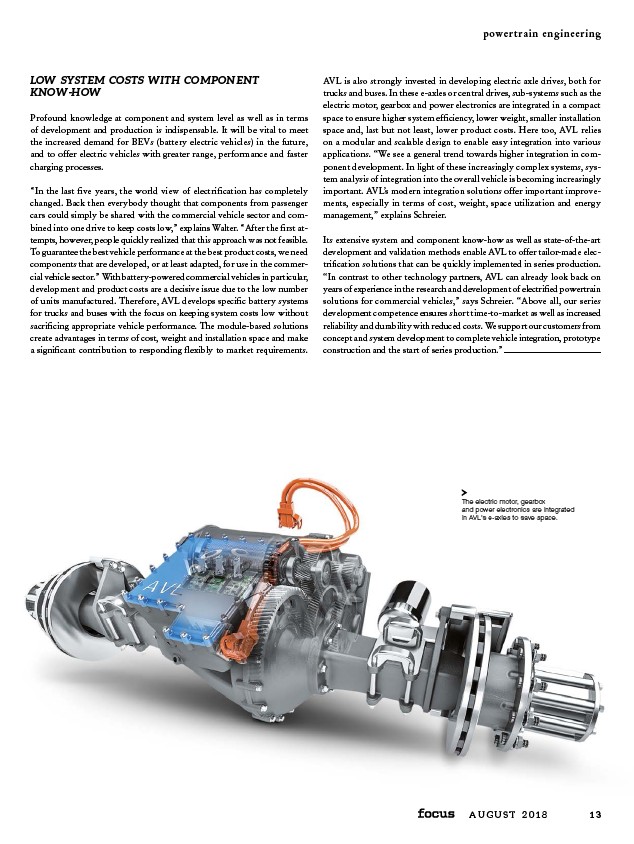
powertrain engineering
A U G U S T 2 0 1 8 1 3
LOW SYSTEM COSTS WITH COMPONENT
KNOW-HOW
Profound knowledge at component and system level as well as in terms
of development and production is indispensable. It will be vital to meet
the increased demand for BEVs (battery electric vehicles) in the future,
and to offer electric vehicles with greater range, performance and faster
charging processes.
“In the last five years, the world view of electrification has completely
changed. Back then everybody thought that components from passenger
cars could simply be shared with the commercial vehicle sector and combined
into one drive to keep costs low,” explains Walter. “After the first attempts,
however, people quickly realized that this approach was not feasible.
To guarantee the best vehicle performance at the best product costs, we need
components that are developed, or at least adapted, for use in the commercial
vehicle sector.” With battery-powered commercial vehicles in particular,
development and product costs are a decisive issue due to the low number
of units manufactured. Therefore, AVL develops specific battery systems
for trucks and buses with the focus on keeping system costs low without
sacrificing appropriate vehicle performance. The module-based
solutions
create advantages in terms of cost, weight and installation space and make
a significant contribution to responding flexibly to market requirements.
AVL is also strongly invested in developing electric axle drives, both for
trucks and buses. In these e-axles or central drives, sub-systems such as the
electric motor, gearbox and power electronics are integrated in a compact
space to ensure higher system efficiency, lower weight, smaller installation
space and, last but not least, lower product costs. Here too, AVL relies
on a modular and scalable design to enable easy integration into various
applications. “We see a general trend towards higher integration in component
development. In light of these increasingly complex systems, system
analysis of integration into the overall vehicle is becoming increasingly
important. AVL’s modern integration solutions offer important improvements,
especially in terms of cost, weight, space utilization and energy
management,” explains Schreier.
Its extensive system and component know-how as well as state-of-the-art
development and validation methods enable AVL to offer tailor-made electrification
solutions that can be quickly implemented in series production.
“In contrast to other technology partners, AVL can already look back on
years of experience in the research and development of electrified powertrain
solutions for commercial vehicles,” says Schreier. “Above all, our series
development competence ensures short time-to-market as well as increased
reliability and durability with reduced costs. We support our customers from
concept and system development to complete vehicle integration, prototype
construction and the start of series production.”
The electric motor, gearbox
and power electronics are integrated
in AVL's e-axles to save space.